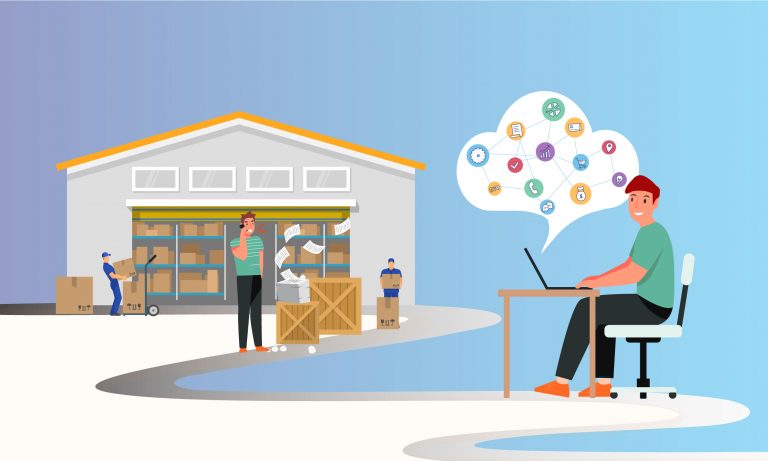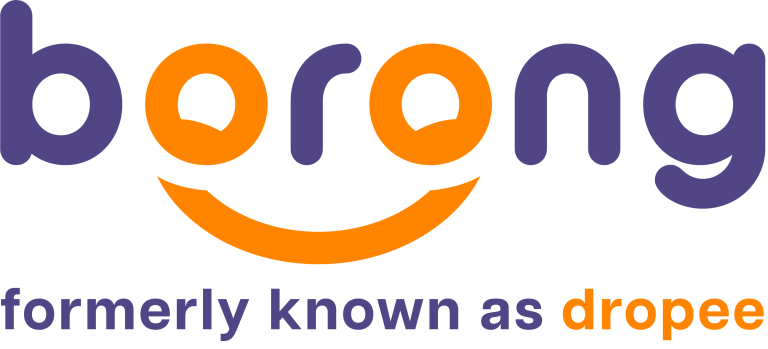Hey guys! Welcome to the start of Dropee’s e-commerce guide. In this two-part series, our goal is to address the big questions often posed by our users surrounding the hype that is B2B e-commerce. In Part 1, we talk about how to transform your B2B business with e-commerce. We explain what it is, how it is valuable to B2B businesses and most importantly, how businesses can incorporate it into their strategy to reap the benefits that it has to offer.
In recent years, there has been non-stop chatter about the digital wave that has been impacting the B2B industry and how it has become an integral element for businesses looking to thrive in a world that is becoming increasingly competitive.
For more traditional businesses that have yet to become a part of this digital adoption, we understand that the influx of information can be overwhelming. Intimidating even. And we hope to change this and eliminate your fears because we know the benefits will outweigh the costs for you as a business owner in the long run.
The first part of this series ( which is what you will see in this article!) will include points on what B2B e-commerce is, the major trends that are currently dominating the industry and handy tips on how businesses can roll-out their own B2B e-commerce venture.
B2B E-commerce: What is It?
Let’s start with the basics. As most of us already know, B2B or business-to-business, refers to a situation in which a business sells a product or service to another business. The term refers to any and all transactions between companies that run the gamut from manufacturers, distributors, wholesalers and retailers. So for example, when a leather manufacturer provides the raw materials to a shoemaker to be made into a pair of leather boots that he will eventually sell to an end-user, both parties are partaking in a B2B transaction.
E-commerce on the other hand, refers to all transactions that happen electronically, i.e online. Hence, B2B e-commerce can simply be described as the sale of all products and services between businesses that take place online. So when a grocery store places an online order for a bulk supply of apples on borong.com from a fruit distributor; and the distributor e-mails him to inform him that the order has been received and he is currently preparing the stock for delivery, both entities are participants of what we now understand to be B2B e-commerce.

The Importance of E-commerce for Businesses
A recent estimate by Forrester states that the B2B e-commerce industry is expected to reach USD$1.8 trillion in revenue by 2023 and will represent 12 percent of all B2B sales across the United States. Whilst in Asia, they predicted a growth of 12.1 percent per annum. To further add to this, 73 percent of today’s B2B buyers are millennials, i.e a generation of internet-savvy, digitally inclined individuals who have high expectations when it comes to efficiency and on-demand information. And on the other side of the playing field, 56 percent of manufacturers say that e-commerce will become their primary sales channel as of 2020.
This tells us that the new direction is digital. We live and operate in a world that is a product of an increasingly on-demand economy whose customers are accustomed to seamless ordering processes, flash shipping and almost-immediate access to information that will inform their buying decisions. And when these individuals wake up in the morning, head to work and put on their B2B hats, they will come to expect the same from their B2B network.
So what’s in it for businesses? We take a look at three primary motivators behind why B2B businesses have taken the e-commerce leap.
Reach New Customers. Identify, target and communicate with customers you once did not have access to. Geographical and physical constraints no longer pose a problem when you can simply use your e-commerce portal to connect with prospects. A B2B portal is also an excellent way to re-connect and follow-up with leads after meeting them in person.
For example, you meet a potential retail partner at a tradeshow and want to follow up. In a more traditional setting, it would involve a lot of back-and-forth, however, with your own e-commerce platform, all you need to do is give them the link to your website or product page and they can find everything they need to know about your business, access your contact information and get started on building a partnership.
Expand Promotional and Marketing Efforts. Curate and have more control over your brand presence and how you want to market your business. With an online platform, everything ranging from your product catalogue, price points and product descriptions is available online and can be accessed at any given time, even when you and your sales team are not on-call. This means that people can find out about your business without having to go through the process of waiting on a sales rep to get in touch with them or wait for regular office hours to find the information they need.
An e-commerce portal is also a fantastic way to leverage on promotions that you can use to entice and reward customers and continue to incentivise them to do business with you. Examples of marketing promotions businesses can use include providing customers with free shipping or discount codes they can redeem with a minimum spend the next time they make a purchase.
Lowered Costs. Increase your revenue while reducing your costs? Impossible right? Not quite, if you have e-commerce in the picture. Technological advances means that almost every aspect of your business can be done online, even the most complex ones! Everything (well, nearly everything) ranging from order processing, inventory management, delivery tracking to pricing and payment collection can be automated with the right e-commerce software.
This means that you can afford to cut down on certain things even as you continue to grow and scale your business. For example, instead of hiring a finance team to manage payments, generate invoices and etc, you can simply automate these functions and save on additional expenses.
E-commerce software can also help you capitalise on data that you would not otherwise have access to if everything were to be done manually, allowing you to grow your business based on educated insights instead of vague estimates.

Recognising B2B E-commerce Trends
We cannot talk about 2020 without acknowledging how challenging it has been for businesses across the world because of the disruption brought about by Covid-19. For members of the B2B community here in Malaysia, many have had to deal with issues such as stock wastage due to inability to move products, employee layoffs, budget cuts and more. It also marked a vigorous foray into the world of e-commerce in an effort to uplift businesses and explore previously uncharted territories, bringing trends in B2B e-commerce to the forefront, some of which we predict will go on to surpass the effects of Covid-19. These trends include:
B2B Online Marketplaces Will Grow in Numbers. Gartner predicts that 75% of B2B procurement will occur within online marketplaces in the next few years and as the market continues to become more competitive in an effort to serve an increasingly demanding and tech-savvy customer base, more B2B businesses will shift towards promoting and selling their products and services in spaces outside of their own website as part of an ongoing effort to get the attention of more customers.
Virtual Interactions Will Continue to Thrive. An important lifeline for businesses during a period when movement and travel was severely restricted, virtual communication has proven to be far more effective and essential when it comes to getting things done. No longer do we have to wait for everyone to be in the same room for decisions to be made.
Need to speak to your sales team about sales strategies for a new product? Hop on a video call to iron out the template and get feedback from them in real time. Want to strike up a partnership with a potential retailer? Share your Google Meet link with them and present your pitch via screen-sharing. Recently replenished your stock for an in-demand item and want to update your retailers? Send out an email blast and you’re good to go.
It’s All About Omnichannel Selling. When the average B2B user of today is using no less than six different channels throughout the buying process, it’s clear that omnichannel selling should be on the radar. It refers to the process of creating a strong and seamless sales experience on both a digital and physical platform; meaning that regardless of whether your customer is shopping on your website, your Facebook page or your brick-and-mortar location, they will experience the same level of service and satisfaction.
The omnichannel experience is about being able to reach your customers at every single touchpoint and making sure that each channel works in cohesion with the next to nurture you business’ relationship with your customer. An example of a great omnichannel experience is when a customer is able to find the same range of products on your company website as they would on your Facebook page and when they place an order online, they have the option to collect the item at your physical store while you have access to all these channels on a single integrated platform.
Speedy Order Fulfillment. The increase in expectation for almost overnight-delivery options in B2C is being transferred over to the B2B sphere and is being led by millennials who are accustomed to speedy, efficient fulfillment and delivery options. This is leading more B2B players to start thinking about what needs to be done to optimise their order fulfillment efforts including inventory management, meeting and expediting delivery dates and more. The answer to this lies in automation. More and more companies are investing in new technologies and integrated software solutions to streamline their operations, eliminate human error and get them closer towards the goal of lightning fast order-fulfilment.
Taking note of these trends and seeing how they can fit into your own plans to digitise your business is a worthy step to take when it comes to assessing what types of changes and improvements you can make. Our next section looks at some useful tips for looking to implement e-commerce into their business.
Handy Tips for Starting Your E-commerce Venture
Whether this will be your first time in rolling an e-commerce business plan for your B2B outfit or if you’re simply looking to improve your online platform with more effective and targeted solutions, we address a series of five best practices you can do to ensure that you’re a step closer towards e-commerce success.
Define Your E-commerce Goals. The first question you should ask yourself is, “ what is my reason for adopting e-commerce? At the end of the day, the primary goal for all businesses is revenue generation. What can I do to make more sales? But, each B2B business is also unique which means that each business will have a different set of needs for achieving that goal.
Whether you’re interested in improving and speeding up inventory management, expanding your customer reach within the region or implement better payment processes in your back-office, being able to identify your reason for wanting to adopt e-commerce will help you to narrow down what types of solutions to pursue while cutting through the noise and avoiding any unnecessary costs on your end.
Identify Your Customer Needs. So you’ve already considered your business goals. Now, take a step back and also think about your customers and what you can do to improve their shopping experience with you and on your e-commerce platform. Do they want more product information? Do they need an alternate means of communicating with you or your sales team? These and more are important factors to consider when you’re setting up your B2B-commerce platform or deciding on what type of software to invest in. At the end of the day, you want to build a portal that is user-friendly, uncomplicated and simplifies their shopping experience.
Take Advantage of Your Solutions Provider’s Expertise. Once you’ve chosen an e-commerce solutions provider, do yourself a favour and tap into their expertise. These guys have worked with a slew of other businesses and are bound to have insight into multiple aspects of what it takes to roll out an e-commerce platform. How long does it take to launch a project? What do B2B customers look for in a good website? How should I get started on creating online content for my website? These and more are queries that your e-commerce software sales representative should be able to answer you along with a set of unique insights that might address certain blindspots you may have, especially is this a new experience for you.
Make Sure Your Customers Know About Your B2B Site. As you get ready to launch your e-commerce business, remember to also let your customers know about it and when they can start using it. Spread the word via your sales team and through your main channels of communication to prime your customers. We also recommend setting up a promotional event for early-adopters and first-time shoppers on your website to inventise your network of customers to get an early start on shopping via your website and when possible, make sure to get feedback on their user experience so that you can continue to make improvements.
Taking the next steps towards digitising your business doesn’t have to be a messy nor complicated process and here at Dropee, our goal is to help Malaysian businesses transition into e-commerce as easily as possible. To learn more about how you can grow and efficiently manage your B2B business using e-commerce solutions, get in touch with us today to schedule a free consultation with our sales team. We can’t wait to hear from you!


